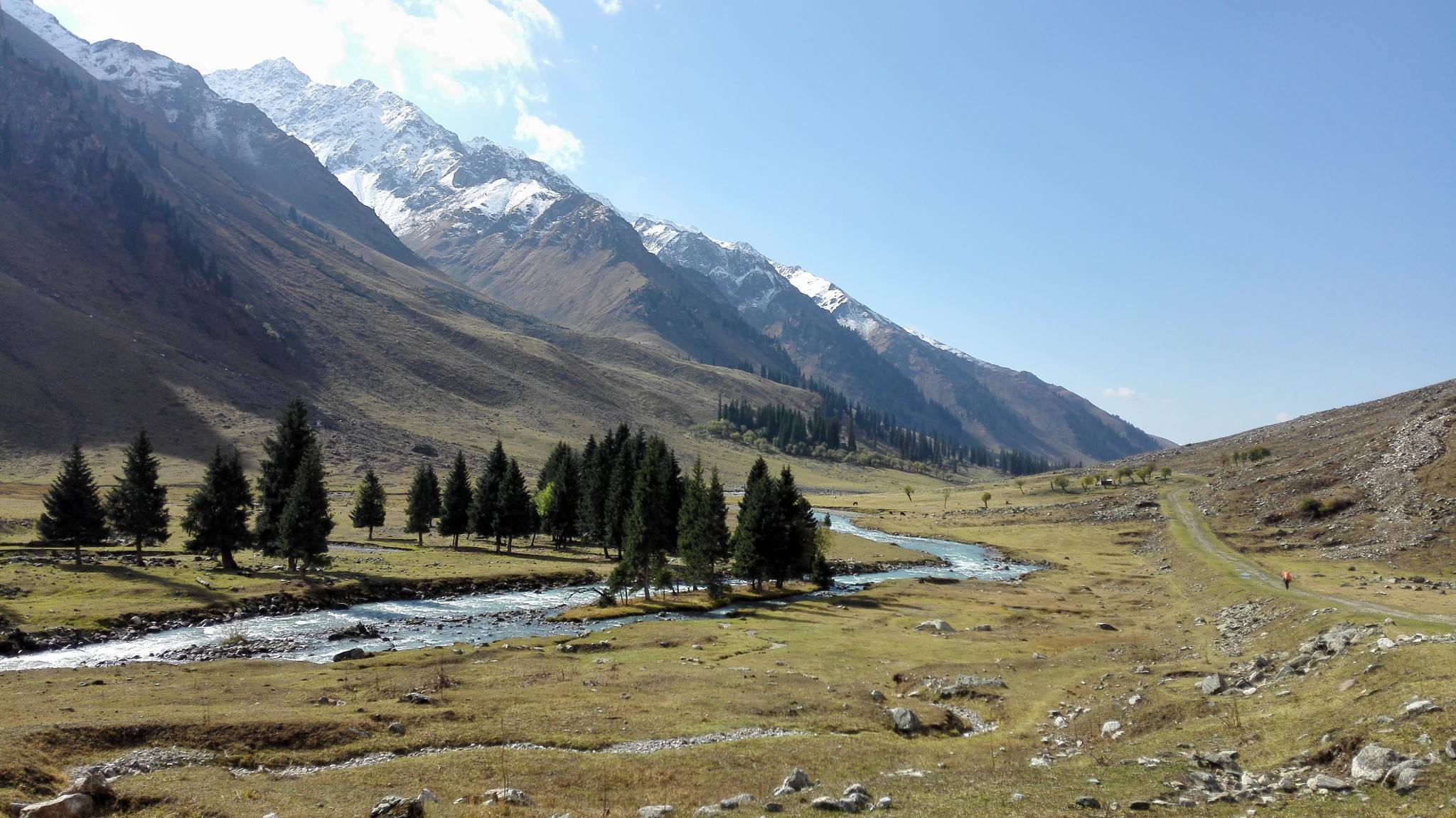Ancient China went abroad via Tianshan valley roads

The Wusun Ancient Road in Tianshan Valley
As early as the Bronze age, the early inhabitants of the Eurasian continent were already utilizing the natural landscape of Tianshan Valley. Despite the primitive methods of carrying goods on horseback and camels, the valley roads served as bridges between ancient civilizations and promoted the social development of civilizations along the roads.
The Tianshan Valley roads were known to the nomadic peoples living both inside and outside the Tianshan Mountains. The Saka, Wusun, Rouzhi as well as the Turks and Mongols all had close political and economic ties with these ancient roads. The envoys and merchants from Central China also went westward through these roads.
In a grave of a member of the Wusun people unearthed on the northern side of Tianshan in 1961, a plowshare that had been used in the Yellow River basin during the Han Dynasty and pottery used in the Qin Dynasty were discovered. In a grave of a Saka aristocrat, a large number of golden items were discovered, together with lacquerware with characteristics typical of Chu culture in the Yangtze River basin. Similar Chu cultural relics were also found in the Pazyryk Cemetery in Siberia, Russia, which date back to about 24 centuries ago. Both these graves were built centuries before Zhang Qian’s mission in West China and Central Asia, which fueled speculation about ancient cultural communication along the Tianshan valley roads.
Archaeological evidence revealing the administrative structure of the Tang Dynasty in Tianshan Valley was found in the official documents unearthed in Turpan in 1964. The documents also show that military stations had already been established in these valleys in the Kaiyuan Era (713-741), which was later interrupted by the Battle of Talas, a military engagement between the Tang Dynasty and the Arab Empire.
The Silk Road along the Tianshan Mountains carried the dreams of people from different countries and ethnic groups. In a crack of a giant rock in a gully in the Tianshan Mountains, 13 gold bars and hundreds of silver coins of the Sassanid Empire of Persia were discovered in 1959, providing evidence of the economic ties between the Tang Dynasty and the Persian Empire. The true stories of the owners of these gold and silver coins may never be known. However, the general notion of ordinary merchants with their dreams for fortune who exposed themselves to the winds and rains on the roads, remains a striking, and no doubt common image of the era.
The Silk Roads: the Route Network of the Chang’an-Tianshan Corridor was added to the World Heritage List in 2014. In the future, a convenient travel road between China, Kazakhstan, Kyrgyzstan and Uzbekistan may be established. Travelling along the Tianshan valley roads to the vast western areas of Central Asia will provide us a better understanding of the living conditions of ancient nationalities, the shared mentality of different ethnic peoples as well as the process of human history and our shared love for nature. By doing so, we could also have a better understanding of the idea of a community of shared destiny for humanity.
Wang Binghua is the director of the Institute of Cultural Relics and Archaeology in Xinjiang Uygur Autonomous Region.
